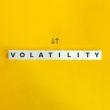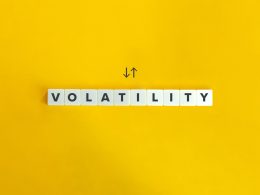by Corey Hoffstein, Newfound Research
This post is available as a PDF download here.
Summary
- This week afforded investors the opportunity to witness unprecedented and historical market events.
- Rather than pen our usual research note, I have decided to simply share how I personally think about investing, covering both private and public investments.
- In doing so, I hope not only to better provide transparency to our clients, but also help demonstrate further about how I think about portfolio composition and construction.
- Given recent turmoil, I also plot the approximate returns of my different public investments year-to-date.
- Finally, I share some thoughts on running a boutique asset management firm during significant market drawdowns.
It was difficult not to be simply awestruck this week. To the younger members of our team, I kept repeating over and over: “it’s okay to be overwhelmed; you’re literally living history right now.”
The headline record was obvious: the speed of the decline witnessed in U.S. equities was exceeded only by October 1987 and 1929. But there was so much more:
- Wednesday was the worst performance for a combined portfolio of the SPY (S&P 500) and TLT (20+ Year U.S. Treasuries) since 2002 (when TLT was formed).
- 10-year U.S. Treasury yields fell below 40 basis points.
- The 1-week range of 30-year U.S. Treasury yields was 90 basis points; the largest since October 1987 when rates were much, much higher.
- Treasury market depth fell to levels not observed since 2008 and off-the-run bonds cheapened substantially versus on-the-run as markets locked up.
- With the illiquidity in the bond market, many fixed-income ETFs became entirely disconnected from their net asset value (NAV). The Vanguard Total Bond Market ETF (BND), for example, traded at an 8% discount to the Vanguard Total Bond Index Fund (VBMFX) on Thursday.
- High yield bonds (HYG) out-performed corporate bonds (LQD) by 500 basis points.
- The VIX hit over 75.
- The March 20th options expiration appears to be on pace to be of the largest non-December expirations ever (with the exception of September 2011) and aggregate gamma exposure estimates remains very large.
Rather than pen our usual research note – which candidly feels a bit tone deaf at this juncture – I thought I’d write something a bit more personal.
Earlier this week, Meb Faber of Cambria Investment Management published part three of his three part series about how he personally invests his own money. Inspired by his radical transparency, I published a snapshot of my approximate portfolio allocation last December.
This week, I wanted to share my thoughts on how I build my personal portfolio.
But First, Some Context
I need to set some context before I address what my actual portfolio looks like. Finances are highly personal and my investments reflect both my situation, risk appetite, and risk preferences. Furthermore, investing is just one piece of the overall financial planning puzzle.
I cannot stress enough that this is by no means a recommendation to anyone on how to invest.
So, here is some context under which I invest.
- I am 32 years old, healthy, married, and have no children.
- My wife and I are both owners of our own businesses. Newfound Research is a privately held, 12-year-old asset management firm and my wife is the co-founder of a nascent, VC-backed technology start-up.
- We do not own a home and are very fortunate to have no debt.
- Being the owners of small businesses, we expect the potential for significant income volatility. Therefore, out of a sheer abundance of caution, we maintain approximately two years of living expenses in our savings accounts. Everything else, we invest.
Private Holdings
My single largest investment – private or public – is my 50% ownership of Newfound Research.
As an asset management firm, Newfound earns revenue through an asset-based fee on the strategies it manages. If we assume a simple multiple-of-revenue valuation model, it rapidly becomes apparent that this ownership is, in many ways, levered exposure to Newfound’s investment strategies. As strategy assets expand or contract – either through performance, subscriptions, or redemptions – so does firm valuation.
This is a somewhat coarse calculation, though, as there are a few drivers of cumulative firm assets, including: (1) performance of our revenue-weighted asset allocation (i.e. what does broad, firm-wide strategy asset allocation exposure look like); (2) the performance of our strategies; (3) our capacity to raise assets. The first driver is primarily responsible for short-run volatility whereas the second driver is required for long-term success. The third driver can be thought of as a force multiple on the second.
It is worth acknowledging that firms with great performance can fail to raise assets and firms with poor performance can raise far more than they likely deserve. Therefore, my ownership of Newfound is not pure levered exposure to our own mandates, but I do believe that over the long run the performance of our strategies does ultimately serve as gravity for our firm valuation.
On a revenue-weighted basis, Newfound’s assets are heavily tilted towards trend equity mandates. These mandates can be thought of as a strategic 0.5 equity beta portfolio with 50% overlay to a long/short trend-following overlay (which I, personally, conceptualize as the coarse delta-replication of an optional straddle).
As with traditional theories on equity, my ownership is probably best modeled as a call option. So, while I may have levered upside exposure, my downside is ultimately capped. Of course, “capped” here means total loss of firm value, current income, and twelve years of work, so it feels pretty significant from where I’m sitting.
Beyond Newfound, I have two other private investments, though both are proportionally much smaller and are simply aimed at diversifying the type of equity exposure I have:
- I made a small allocation to a seed-stage investment fund back in 2013. My thesis – and this was nothing revolutionary at the time – was that technology allowed small, lean start-ups to compete with established incumbents in a way that really was never possible prior and would lead to larger players having to acquire them to keep up. Rather than picking and choosing specific start-ups, for which I neither had the time nor inclination, I chose to out-source. The fund claims to have a net IRR of 13.8%, but distributions to date have been just 5% of initial capital. I mentally just mark this one at zero until proven otherwise.
- Approximately five years ago I invested in a private equity fund and have since recycled my capital into newer vintages. My decision to allocate was largely predicated on simply trying to round out the types of equity exposure I had (which, at the time, was predominately public and seed-stage). There is certainly an abundance of conflicting literature as it relates to private equity, but my goal is simply further diversification within equities.
Public Holdings
Before discussing the specifics of my public holdings, I want to acknowledge that this is merely a snapshot of what is ultimately a work-in-progress. Were my situation with Newfound to change, or were my wife and I to decide to buy a house or start a family, this picture could change dramatically.
Furthermore, when you work at an asset management firm you often are heavily restricted in when or how you can trade. Each trade can require an individual submission for approval as well; e.g. rebalancing 50 positions can require submitting 50 trade approval requests. This also makes it harder to pursue strategies that have to be frequently rebalanced. Therefore, I do my best to allocate more passively to different strategies and “true up” my allocations using new cash flow. But current allocations may not always reflect where I want to be.
For example, I began allocating heavily to equities from 2011 to 2014. More recently, however, I have allocated savings disproportionately towards non-equity exposures as (1) I felt I was overweight equities and (2) the equity allocation continued to outgrow the rest of the portfolio as equity markets climbed. In this case, I may also try to allocate to higher-volatility alternatives such that smaller dollar allocations can have larger risk-weighted impacts.
From a mental framework perspective, I try to think about my allocations in context of duration; i.e. when do I think I will need or want the capital? I also actively consider my diversification across what, how, and when diversification.
Long Duration – 30+ Years
This is capital I expect to draw upon in retirement. Given the long-duration nature of this sleeve, cost and tax-efficiency has a big impact. I expect drawdowns of up to 50% in this sleeve.
- Equity: Global equity exposure predominately tilted towards quality and low-volatility factors. I allocate to both individual securities and low-cost, tax-efficient ETFs. This is also the sleeve I try to perform any tax-loss harvesting out of.
Mid Duration – 5-to-15 Years
This is capital I may or may not want to draw upon in the next two decades given choices that my wife and I make. It also serves to help introduce other, hopefully diversifying sources of return that can be used to rebalance the long-duration sleeve. I expect drawdowns of up to 20-30% in this sleeve, though I expect the drawdowns in managed futures to be largely uncorrelated with the drawdowns in equities, which may provide opportunities to rebalance opportunistically.
- Trend Equity: This sleeve is comprised of long/flat tactical equity strategies managed by Newfound Research. While I consider myself to be massively levered to these types of strategies through my private ownership of Newfound, I believe it is also important that I allocate to our funds. The goal with this allocation is to capture a meaningful proportion of the equity risk premium but avoid significant and prolonged drawdowns. While this approach introduces little what diversification, it can introduce meaningful how and when
- Multi-Asset / Hybrids: Globally diversified, multi-asset portfolios that aim to incorporate risk prermia beyond equities. This sleeve is all about expanding our what This sleeve includes commodity exposure as well as actively managed, non-traditional / hybrid income exposure such as high yield corporates, emerging market debt, and non-agency MBS, preferreds and convertibles.
- Multi-Asset Trend / Managed Futures: A blend of both public and private managed futures / CTA funds. As multi-asset managers, there is an expansion of what exposure in this sleeve, but also a meaningful introduction of how and when I have aimed to select higher volatility funds such that their risk contribution ideally exceeds their weighted allocation. By holding a blend of funds, I am to reduce specification risk.
Short Duration – 1-to-5 Years
This is capital that I either expect to draw upon in the short-term (e.g. as a down payment for a home) or employ opportunistically during market volatility.
- Long-Short Equity: With rates as low as they are, I have been reluctant to over-allocate to short-term fixed income. This is a home-rolled, multi-factor long/short portfolio with a beta of approximately 0.3. The long sleeve, however, is dominated by defensive equity characteristics (e.g. low volatility, low beta, balance sheet quality, and price momentum) that often reduces beta further in market drawdowns.
- Fixed Income: 1-to-5-year U.S. Treasury and investment-grade corporate bonds.
The approximate breakdown is 55-60% long-duration, 25-30% mid-duration, and 10-15% short-duration.
How have these different sub-sleeves faired in recent market volatility? More or less as I probably would have expected them to during such a rapid drawdown.
Source: Tiingo. Calculations by Newfound Research. Returns are hypothetical and backtested. Returns are gross of all management fees, transaction fees, and taxes, but net of underlying fund fees. Total return series assumes the reinvestment of all distributions.
Equities clearly got walloped. But this is well in-line with our expectations given the duration of this capital.
On the mid-duration side, the multi-asset / hybrids took a bit of a knock given their passive beta exposure, but more-or-less in-line with most balanced portfolios. Multi-asset trend / managed futures participated in the first part of the drawdown, but quickly started to add value during the next leg – precisely the type of behavior we’d expect from trend-followers. Trend equity was a bit more exposed to the initial shock, as it is less diversified than managed futures strategies, but was able to put about +600bp on the broad equity market at the deepest point of the drawdown.
On the short-duration side, fixed-income maintained fairly stable value. Probably the most disappointing piece was the long/short strategy’s drawdown, which reflected almost a full beta of 0.3.
While many components of this strategy remain static, it is important to consider those that do not. The return profiles of both the managed futures and trend equity sleeves should make it clear that they have dramatically changed their equity beta exposure over the last two weeks. If this drawdown were to continue, these sleeves may very well help meaningfully dampen overall portfolio volatility and even provide a source of capital for re-allocation. If the market rebounds dramatically, then I expect to participate in my more passive holdings.
Running a Boutique Asset Management Firm
For the remainder of this note, I want to take off my investment hat and just share some thoughts about running a boutique asset management firm during volatile times like these.
For (most) asset management firms, revenue is generated as a carry (i.e., the fee) on the assets they manage. From a revenue stability perspective, the things that matter are:
- What’s your revenue-weighted asset allocation?
- What’s your idiosyncratic risk?
The first point is evident when we consider how an all-equity boutique is likely fairing versus a fixed-income boutique right now. When equity markets drop 20%, most equity managers see an immediate and commensurate drop in their forecasted short-term revenue. But that number can vary dramatically; in this most recent drawdown, if you were a small-cap value manager, that number might be closer to 40%. A core fixed-income shop, on the other hand, has likely had a much more stable forecast through the most recent turmoil.
Of course, this exposure cuts both ways. In a bull market, an all-equity boutique benefits from equity market tailwinds. An equity firm that failed to raise assets over the last decade still likely saw revenue climb 100% simply from market growth alone. In a way, charging carry ultimately means that you capture the risk premia associated with your revenue-weighted asset exposure.
Even if your revenue-weighted asset exposure is more diversified – say a 50/50 stock/bond split – you’ll still likely see assets decline by 10% regularly from market volatility, and far more in a crisis. And that’s to mention nothing of actual redemptions.
The idiosyncratic risk component is also very important. This hits on both our actual investment performance as well as our ability to actually grow and maintain our business. As I see it, asset growth comes from three primary channels:
- Net new assets from sales + marketing.
- Growth in existing advisor assets.
- Revenue-weighted portfolio returns.
The second often goes overlooked but can be a hugely powerful network effect for a well-established firm. As advisors onboard new clients, or existing clients contribute savings, you can see natural flows. Unfortunately, in highly volatile markets, pretty much all three channels shut down.
- Advisors aren’t typically doing due diligence on new funds or making significant portfolio changes.
- New client growth for advisors typically slows down and existing clients may reduce contributions.
- Market losses can cause existing assets to drop.
In the long run, #1 and #2 generally drive overall firm asset levels (assuming performance supports it). In the short term, #3 can have a considerable impact, especially on the downside.
The significant risk of market volatility – especially if it is prolonged – is the potential for “knock-out” effects. For example, if you run your business at a 20% profit margin and your assets drop 20%, and therefore so does your revenue, you pretty quickly have to start making some tough decisions.
Which also means that during growth periods, you have to ask yourself some difficult questions like, “do I run my business very conservatively and grow slowly to avoid knock-out risk, or do I grow on lean margins and hope markets cooperate?”
The answer may seem obvious, but the risk with being too conservative is you have to compete with firms that aren’t being conservative at all. Rather, they’re lavishly spending on sponsored events, fancy materials, T&E, et cetera. If you fail to reinvest aggressively enough, you can fail to grow because you cannot compete.
During a drawdown, some costs are easy to cut quickly, such as event sponsorships, T&E, and marketing materials. In other cases, some costs may be more ingrained in the firm (e.g. technology, office space, et cetera) and difficult to extract. Some costs are theoretically easy to cut but can be emotionally demanding and in the long run potentially crippling; personnel tops this list.
The other significant risk is maintaining a strong balance sheet. If you advise a mutual fund or ETF, are a sub-advisor, or have an institutional allocation, you likely have to maintain a certain level of balance sheet strength. If revenue declines and you need to draw on cash, you can risk losing further assets by losing these mandates.
For Newfound specifically, we have always tried to be extra conservative in with our margins. We also run strategies that, in effect, coarsely replicate 0.5 equity beta overlaid with option straddles. As the markets decline, these strategies can de-risk significantly which may help against a prolonged decline, but likely does little for the initial sell-off.
It is worth pointing out that “fee compression” has already put a ton of margin pressure on asset management firms. Past market drops have recovered quickly. A sustained decline could lead to lots of firms – big and small – making some tough decisions.
Conclusion
For all the academic and practitioner research, investing remains a highly personal endeavor. The way we build portfolios will be driven by our investment beliefs, risk appetite, opportunities, and constraints.
In this note, I wanted to share some concrete thoughts about how I go about allocating my own capital. Here are the high-level takeaways:
- My largest investment is my ownership of Newfound Research, whose short-term valuation is heavily driven by market returns and long-term valuation is heavily driven by the success of the mandates we manage as well as our operating capabilities. In the short run, I consider this to be highly levered exposure to our trend equity mandates. While ownership of an asset management firm may not be relatable for most investors, I think it is important to consider how human capital generally fits in an investor’s overall allocation framework. For many, human capital likely reflects an investment grade or high yield corporate bond that can default during negative economic shocks. Considering how this “bond” correlates with investment capital may be critical for building an all-weather portfolio.
- Within my public assets, I think in a framework of duration – i.e. when I might want to tap into my capital – and allocate accordingly. I also explicitly take into account what, how, and when-based diversification in the types of exposures I build into my portfolio.
- Regardless, as a younger investor with a significant proportion of assets in long-duration capital, meaningful drawdowns are expected (especially given compliance constraints I am subject to around trading). Like many investors, my portfolio was also subject to meaningful drawdowns over the past two weeks.
It is almost certain that my portfolio – when viewed comprehensively for both its private and public exposures – is definitively sub-optimal for precisely however the future plays out. With the benefit of hindsight, it will always be wrong. My goal, however, is to first avoid points of catastrophic failure; after that, the best I aim to do is diversify my what, how, and when as appropriate for the time horizon I am trying to invest my assets over.
Corey Hoffstein
Corey is co-founder and Chief Investment Officer of Newfound Research, a quantitative asset manager offering a suite of separately managed accounts and mutual funds. At Newfound, Corey is responsible for portfolio management, investment research, strategy development, and communication of the firm's views to clients. Prior to offering asset management services, Newfound licensed research from the quantitative investment models developed by Corey. At peak, this research helped steer the tactical allocation decisions for upwards of $10bn. Corey holds a Master of Science in Computational Finance from Carnegie Mellon University and a Bachelor of Science in Computer Science, cum laude, from Cornell University. You can connect with Corey on LinkedIn or Twitter.
This post was origninally published at the Newfound Research's Flirting With Models Blog

















